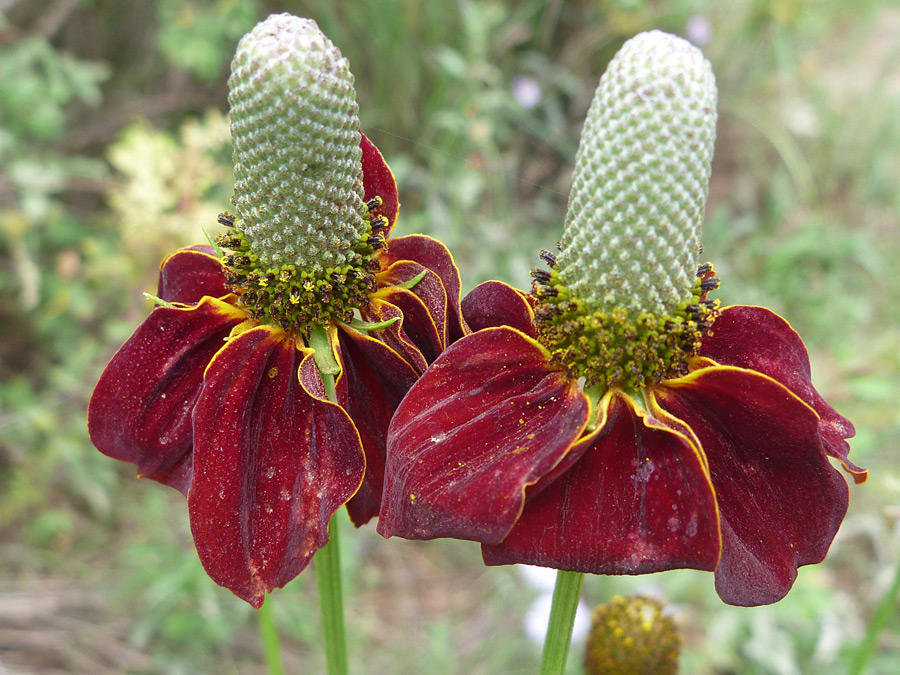

Traditionally purple, with ray flowers that droop downward off the central cone, Coneflowers today enjoy a rich variety of colors and flower shapes with ray florets held horizontal, single or even doubled, giving them the look of Chrysanthemum. A great prairie flower, its bright and large blossoms made a successful transition to the backyard. Truly an American plant, native to the central and eastern part of the country, it was used by the early Native Americans to cure wounds and infections. Propagate by seed, division in spring or fall, or by root cuttings from late fall to early winter.Įchinacea, commonly called Coneflower, has been cultivated as a hardy and showy perennial since the 1700s, both in North America and Europe.Remove spent flowers and cut back the stems to encourage further blooms.Attractive to butterflies, hummingbirds, and other pollinators, but deer resistant.

If flower heads are not removed in the fall, the blackened cones will be visited by birds that feed on the seeds.

PURPLE CONEFLOWER PLANT FULL

All-American selections Gold Medal in 2010.Perfect for small gardens and containers. An early bloomer, this great-looking perennial has a compact habit and shines in the garden from early to late summer, sometimes with additional sporadic bloom until frost. It is compact enough and the bloom period is long enough that it is a valuable addition to small gardens it also is a must-have in larger prairie-style plantings. This plant is exceptionally tough and easy to maintain. wide (7-10 cm), are beautifully carried on sturdy, well-branched stems. Known scientifically as Echinacea purpurea, this native plant begins blooming in July and continues into late summer. Retaining their color as they mature, the bright deep purple-pink to magenta flowers, up to 3-4 in. It is a dazzling flower with big, pure white-flowered blossoms in late summer and early fall.ĭeer are put off by the spiky cores and intense odor, making it a deer-resistant plant.Echinacea purpurea PowWow Wild Berry is a clear Gold Medal contender for the incredible color of its blossoms, its outstanding performance, and excellent branching habit that results in more blossoms per plant - an awesome addition to the garden. Dry open woods, prairies, and barrens are among its preferred environments. This budding plant is native to North America and belongs to the sunflower family. The plant has a well-branched, robust, and bushy growth habit. It has a light fragrance and is quite floriferous. Once mature, they prefer continuous watering and become more drought tolerant as the season progresses. Typically reaching two to four feet in height, you can distinguish these thick by their rich green leaves and robust stems while maintaining their shape throughout the season. The perennial grows between 80 and 100 centimeters (32 and 40 in) high. From a powerful taproot with numerous vertically growing secondary roots, upright and bristle-hairy stems sprout. The purple coneflower forms upright clumps. The color orange symbolizes vigor and vitality, and it adds to the appeal of the blossoms. Characteristics of purple coneflower Plant. It blooms from midsummer through fall, with bright yellow-orange flowers nearly covering the entire plant. Purple Coneflower is a two-toned double flower that produces dark pink, daisy-like petals surrounding a darker pink pompom with a green eye in the center. Purple Coneflower plant blooms from midsummer through fall Even though they have a large flowerhead, coneflowers have sturdy stems, and they rarely require staking. Many of the older types can self-seed if you leave the blossoms in situ, which is a simple method to increase the number of plants in your garden. Since these plants grow in clusters organically, they will not spread as far as other perennials. Early spring is the most incredible time to plant these flowers because the risk of frost has gone, and the soil remains warm. The most pleasing blooming results require well-drained soil and full sun. They are heat and drought-tolerant, as well as easy to grow. In addition to being sturdy, small, native plants, they also attract bees and butterflies to the garden. Hence, its rarity adds up to its charm even more. It is a rare plant that you can only find in eastern and central North America and nowhere else in the world. Purple Coneflower - Echinacea - derives from the Greek word (ekhinos), meaning sea urchin.


 0 kommentar(er)
0 kommentar(er)
